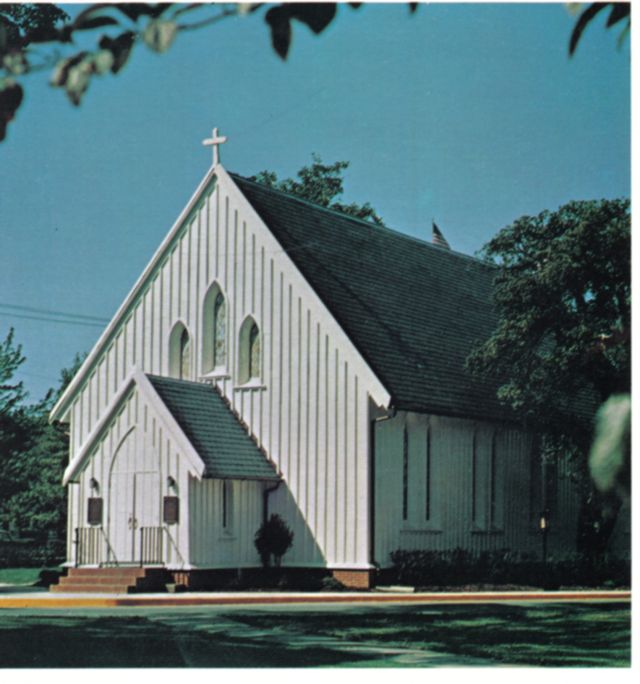
CHAPEL OF THE CENTURION

Fort Monroe, Virginia
"Oyster Sellers at Fort Monroe in the 1880's
These sturdy street merchants have paused a moment on Bernard Road. In left background is the Chapel of the Centurion. To right is the Lincoln Gun, since moved to a different location"
THE CHAPEL OF THE CENTURION
Welcome to the Army's oldest wooden structure in continuous use for religious services. The Chapel is named after the Roman Centurion, Cornelius, who was brought to Christianity by Peter.
Religious services at Fort Monroe began on a regular basis in 1825 when the Reverend Mark Chevers came to the fort. He was the rector of St. John's Episcopal Church, Hampton. For several years he came to Fort Monroe on alternate Sundays to various quarters for services. 1 December 1838, he became the Post Chaplain and continued that assignment until his death, 13 September 1875, having served the garrison over fifty years. A small chapel in the Chapel Center is named in honor of Chaplain Chevers.
22 June 1855, an explosion in the mixing room of the laboratory in the arsenal at the fort killed Francis M. McKnight and Henry Sheffis, two artificers working with Lieutenant Julian McAllister. McAllister's thankfulness for God's sparing his life resulted in the construction of the chapel.
Through the personal efforts of Lieutenant McAllister and his Commander, Captain Alexander B. Dyer, $6,000.00 was donated for the construction of the chapel. Richard Upjohn, noted architect, designed the building [HN1] and construction began in 1856. Bishop John Johns from the Episcopal Diocese of Virginia consecrated the chapel 3 May 1858.
Chaplain Osgood Herrick succeeded Chaplain Mark Chevers in 1875. During the last ten years of Chaplain Herrick's assignment as the Post Chaplain, various stained glass windows and chancel furnishings were installed and dedicated to the glory of God in memory of loved ones who had been stationed at the fort. When Chaplain Herrick departed in 1890, gifts of windows and furnishings continued through Chaplain George Dunbar's tour as Post Chaplain, 1903-1911.
A fire occurred in the chapel on 27 April 1933, during the funeral of a sergeant who had earlier told the Post Chaplain, "If I went to church— the chapel would burn up." The casket had been brought into the chapel when fire was noticed burning at the top of the roof above the organ. The casket was placed on the porch of the quarters opposite the chapel entrance since the caisson and driver had departed across the parade field as the members of the congregation left the building. The funeral service resumed after the fire was extinguished. The chapel congregation participated in a great centennial celebration in 1958. Several stained glass windows were designed and dedicated at that time. Since 1958 the final placement of stained glass windows in the nave and narthex have been completed. [In 1976 the Narthex stained-glass windows were the last to be installed in the Chapel.]
In April 1968 a major restoration was begun under the able hand of the Post Engineer, Colonel Stanford Polonsky. The building was raised allowing a brick foundation to be built and a heating and air conditioning system to be installed. The needle point cushions were completed during 1973-77. The present pews are the fourth set to be used in the chapel. The pews which replaced the original pine benches in 1880 were removed in 1966. The oak pews installed in 1981 are crafted after the ones installed in 1880. The unique intertwining of the lives of those remembered in the furnishings of the chapel add a dimension of history at Fort Monroe unparalleled in most Army installations. In 1970, Mrs. Paul Erickson began the fascinating collection of data concerning the windows and furnishings in the chapel. Through her tenacious efforts in writing and talking to family members of those memorialized, a rich tapestry was formed of the meeting of artist and soldier.
Home * Sanctuary * Nave One * Nave Two * Narthex * Accessories * Furnishings * Chaplains *
Historical Notes * Editor's Comments